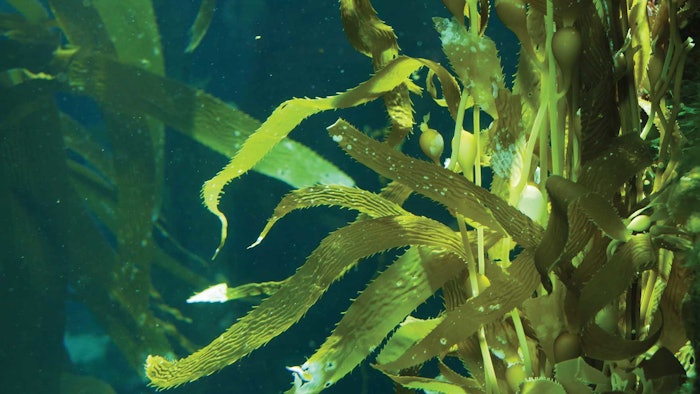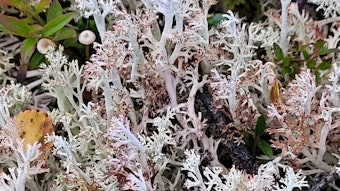
Interest in professional anti-aging skin care procedures is on the rise, and while these treatments ultimately provide the desired benefits, in doing so, they also negatively impact the barrier. To prepare the skin barrier for such procedures and speed its recovery, as well as protect against daily stress, La Mer proposes topical treatment with a Macrocystis pyrifera kelp ferment.
The material’s ability to enhance overall barrier integrity and function was presented during the 2022 Society of Investigative Dermatology meeting. Jaime Emmetsberger, Ph.D. (JE), lead scientist of Max Huber Research Labs, described this research in a recent interview.
C&T: Describe this research, in brief.
JE: We explored the skin barrier benefits of our proprietary Macrocystis pyrifera ferment, both at a cellular level as well as clinically. We demonstrated that the ferment enhanced filaggrin expression in cultured keratinocytes; increased skin lipids; supported barrier integrity and enhanced the skin’s moisture content. It also demonstrated accelerated recovery benefits following barrier breach with microneedles in reconstructed skin models—this gave us a foundation to move forward to evaluate the ferment clinically, where we evaluated barrier resiliency using a multi-ingredient serum that contained the ferment.
We demonstrated clinically that the serum possessed barrier-strengthening properties, which led us to evaluate if the serum could help to support barrier integrity when the skin barrier is disrupted by cosmetic treatments or professional procedures such as glycolic acid peels or laser procedures. What we found is the serum reduced water loss, reinforced the stratum corneum quality and reduced immediate barrier disruption caused by these professional level treatments.
C&T: What were the drivers for these studies? For instance, a market need, or an extension of previous work?
JE: It was a bit of both. We constantly evaluate our ferment to discover novel biological pathways that are being modulated, but in this case, we were also addressing a market need. We know that cosmetic procedures are a growing consumer trend and depending on the procedure, it can weaken the skin’s barrier during as well as after the procedure occurs. This brief impairment of the barrier can contribute to some of the known side effects of having these procedures, such as redness, sensitivity and in some conditions, even a prolonged healing time. With that said, we also know the importance of barrier integrity and benefit of everyday care; and how, if we amplify or enhance the barrier, it can increase the barrier tolerance and recovery to these extreme conditions.
C&T: How does fermenting this extract boost or synergize the kelp’s properties?
JE: Our proprietary Macrocystis pyrifera ferment is created through our own unique fermentation process. The fermented kelp is bio-converted through the action of its own, naturally occurring microorganisms like bacteria and fungi, to create other types of bioactive molecules. Only through this fermentation process can the biological benefits of the kelp itself be boosted.
C&T: In your research, did you uncover anything new, or did it corroborate your initial hypotheses?
JE: One of the first in vitro assays that was performed on our proprietary ferment was in relation to skin barrier, and this entailed evaluating the electrical resistance of skin after topical treatment. Topical treatment with the ferment increased the electrical resistance of the skin which demonstrated that the ferment possesses properties to increase barrier integrity. To complement these findings, we also found that the ferment increased skin water content in skin models.
The ferment enhances lipids and proteins found in the lipid protein matrix of the stratum corneum, which is crucial to barrier function. As mentioned before, these findings provided us with the foundational evidence that that ferment would perform in a clinical setting—and we challenged ourselves, once again, by treating the skin under extreme conditions such as these professional-level treatments to determine if a serum containing our ferment could really support the skin barrier under stress. Which it did.
C&T: How would you take these findings into commercial development?
JE: I think one of the main uses of these findings would be to educate the consumers on the importance of the skin barrier, and how protecting or accelerating the repair of the skin barrier can lead to faster recovery as well as less down time after these professional treatments. In addition, our ferment could essentially offer these elevated benefits to counter extreme stress conditions that the skin may encounter on an everyday basis or with these professional level treatments. The goal here is to deliver and support skin’s health under these stressful states. What we’re aiming for is to accelerate the recovery, have less down time, and really leverage these insights to increase skin health; to prep the skin for these procedures or to utilize the ferment for faster recovery. There are so many opportunities for future exploration to enhance consumers experiences.
C&T: What are some next steps in this work, or areas that you would like to explore further?
JE: We would like to evaluate different mechanisms of skin-strengthening that will either help protect the skin and/or accelerate the repair of skin under these extreme conditions of stress. This might not only be to complement professional level treatments that were discussed earlier, it might also take into account daily stressors that we encounter, or lifestyle, etc., that lead to irritated skin. We can further explore the mechanisms behind barrier breach, how this leads to skin irritation, and also how it can accelerate, in some conditions, skin aging. When we assess different causes of barrier breach, such as lifestyle and how it stresses the skin, we can determine how it is going to enhance premature aging of the skin and see how we can counter that.
C&T: What are some lifestyle skin stressors that have increased in recent years?
JE: We obviously have a lot of exposure to different types of light sources, such as sun light, artificial lighting, or electric devices. People are using electronic devices such a computers and smart phones more frequently, especially post-COVID, which increases our skins exposure to blue light. With all of the recent changes associated with post-COVID, many individuals are also experiencing stress which can affect the state of the skin. So, we can further explore how our ferment might modulate the damaging effects of these lifestyle changes which can manifest on this skin as discoloration, sensitivity or visible signs of premature aging.
C&T: Was there something about this particular kelp, e.g., extremophile properties, that drew your interest in it?
JE: This kelp, the Macrocystis pyrifera, has natural regenerative qualities along with anti-irritancy benefits. We also know there’s a cycle between barrier and irritated skin—what I mean by this is that if you have a strong barrier, your skin is more likely to be resilient against any type of environmental factors. And those environmental factors are less likely to penetrate the skin and thereby induce irritation. With age, we are more prone to have irritating factors in the skin. And like I said, it is a cycle; so, these irritating factors can also work backwards and breach the barrier. So, with this study, as well as what we know from the kelp itself, we have both this anti-irritancy property and a regenerative barrier-building or barrier-supporting property. So, this fits the needs of both sides of the cycle—reducing irritation signals as well as supporting the barrier so we don’t enhance irritation any further.










